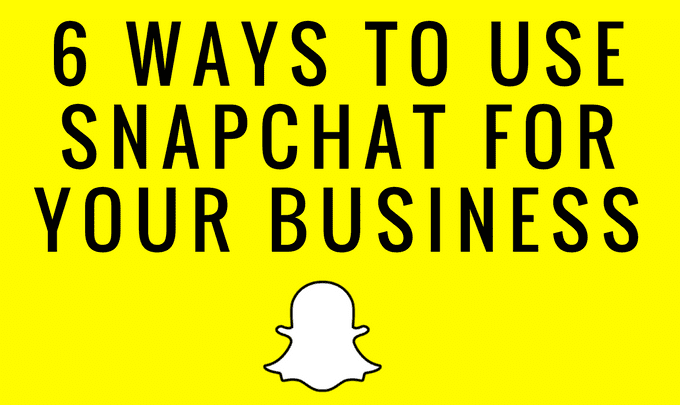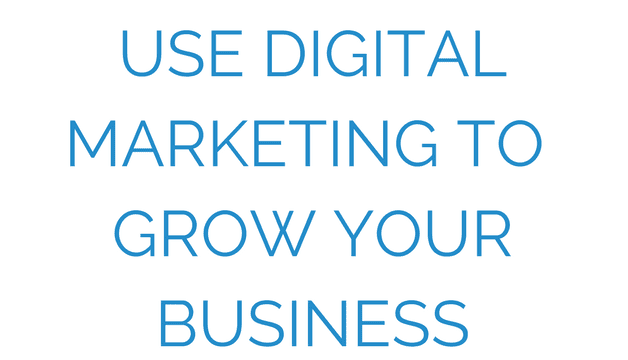7 tips to build a successful social media strategy for your brand

[bctt tweet=”Creating a social media strategy just got easier with these tips from @Wildfusion” username=”SheLeadsAfrica”] We’ve put seven tips to help you put together a winning social media plan of action for your business. Just the way an architect always has a well-drawn out plan for a house before it is built, putting together a “strategy” before getting on social media should be top on the list for any brand/business. Start with a good strategy Every brand or individual who decides to use the social media platform as a tool for either personal branding or brand management must have a “good strategy” on how they intend to play in that space. The first step is to think through what you intend to achieve and how you intend to go about it. Clear and engaging content Having clear and engaging content will provide brand awareness & daily consumer interaction with your brand. Find content that resonates with your target group. For instance; if your target group is young people, research and discover what most young people are doing online. Then craft your strategy to provide content they would be interested in whether it is music, football, videos, games, etc. Two-way communication Social media is a two-way communication. If your audience/consumers take out time to visit your social media page and interact with your content either by commenting, liking or sharing, please respond to them. No matter how flimsy or irrelevant their suggestions may be, the least you can say is “Thank you for your comment”. You would be amazed how much trust you would gain from your audience. Ask for feedback Always ask your audience/consumers for feedback on your products. This would help the brand position itself in the right direction. Social media gives you the opportunity to reach as many people as possible, through one medium, all at the same time! Find your tone of voice If your brand has a “serious tone of voice” offline and you decide to get on social media, find a “social media tone of voice” to increase your online presence & engagement. Use high-quality images On social media, sometimes images speak louder than words! Use images that are sharp, clear and attractive to the user. Your brand logo must always accompany your images as well. Images would serve as an advertising vehicle for your brand. Always be sincere No matter what you do, be sincere. Sincerity equals believable and credibility for your brand.she
Discover six ways to use Snapchat for business

[bctt tweet=”Ready to start using Snapchat for your business? These six tips will help you” username=”SheLeadsAfrica”] Have you thought of adding Snapchat to your marketing mix? Well if you haven’t, you should. A breakdown of Snapchat’s numbers will show you why: over 100 million daily active users, 400 million snaps per day, and over 1 billion views of stories each day. And there’s more. For the personal user, Snapchat lets you easily talk with friends, view Live Stories from around the world, and explore news with the Discover feature. It also presents huge possibilities for your business. One of the key ways for brands to connect viscerally with their customers is to share brand stories. Shared value has been known to create brand loyalty and with Snapchat being real-time, it provides a ready platform to showcase the values and cultures of your company in a personal and visual way. Find out six ways you can use Snapchat for your business in the infographic below (text follows after). 1. Cover live events You can use Snapchat for product launches or one-of-kind events like the 5,000th customer to shop in your store etc 2. Offer contests or promotions You can offer promo codes or discounts to the fans who watch your entire Snapchat story, or ask them to take a snap while holding your product. 3. Behind the scenes You could show off your company and make sure to have fun with it. Capture birthday parties, Friday afternoons or company outings. The idea is to show how your brand differentiates itself with company culture. 4. Partner with influencers Just like with Twitter and Instagram, social media influencers on Snapchat can help spread brand awareness and reach. Allow these influencers “take over” your brand’s Snap for maybe a day to help with the promotion of an upcoming event, product launch etc. These influencers will help introduce & bring their own followers to your page. 5. Publish transparency series Like we mentioned earlier, shared values help build brand loyalty. One of the best ways to do so is present a backstage company access to your customers. You’d be surprised how many people are interested in your internal processes. Cisco has done a neat job of sharing the daily goings-on in the firm with their “A day in the life of an Account Manager” series. If you are wondering what Cisco – a networking and telecommunications company is doing Snapchat – you are not alone. Telecommunications isn’t the most interesting subject to talk about, but Cisco managed to flip the script. They focused on their culture and exposed a human side of their brand. 6. Host AMA sessions Ask Me Anything sessions can be anything you want them to be. They can be about your goofy company culture or a professional conversation about trends in your industry. It could be “We just bought a N1 million camera for our production team, ask us anything” or something a little more serious like “We got 2 billion organic impressions on a campaign last week, ask us anything.” or something random, “We can tint my eyebrows with Coffee, ask us anything.” Find relevant topics you can start with your audience that will pull them in and engage them.
The Art of loyalty: How to build brand love and engagement with content marketing

[bctt tweet=”Few people are loyal to brands, here’s how to get people to love yours with content marketing” username=”SheLeadsAfrica”] What brand of seasoning cube was in your home growing up? Right now, if you took a random survey, odds are your respondents will tell you they saw only one brand of seasoning cube. When I surveyed my colleagues -mostly 90s kids- the results match up. Most remember seeing only just the Maggi seasoning cubes or the Knorr seasoning cubes. It used to be that people were faithful to brands because they have a history with their products and services. They bought only one brand of cars; one brand of toiletries or picked groceries from only one store. Lots of factors are responsible for this loyalty; top on the list being limited choices. But that’s beyond the scope of this article. The point simply is that people are buying differently than they did in the 90s or as early as the turn of the millennium. These days, few people are loyal to brands. According to Accenture, only 28% of customers are loyal to brands. When one considers that it costs up to 25x more to acquire new customers than it does to keep one, this trend provides a unique challenge for business owners. For small businesses, the way to level the playing field with tough deep-pocket competition is to build brand loyalty. Customers will return to you come rain or shine when your brand inspires loyalty. How do you solve this problem as a small business? Enter content marketing. Engaging positively and consistently with customers along their different purchase journeys will nurture brand loyalty. This is most true for millennials; 62% of whom feel that online content drives their loyalty to a brand. Triggering loyalty might just be the core of content marketing. What is content marketing? “Content marketing is a strategic marketing approach focused on creating and distributing valuable, relevant, and consistent content to attract and retain a clearly-defined audience — and, ultimately, to drive profitable customer action,” – Content Marketing Institute. If you received an e-mail update from your spin class instructor this morning, you’ve been exposed to a form of content marketing. If you’ve read a guide on “how to make Bantu Knots when your hair is only two inches long” – that’s content marketing. Combined with a top-class customer service, content marketing will create a community of rabid fans around your brand. [bctt tweet=”Customers will return to you come rain or shine when your brand inspires loyalty” username=”SheLeadsAfrica”] How do you begin? The first step is to outline your typical customer journey. There are many frameworks that explain the process from consumers’ awareness of your brand to transactional engagement with it. My favourite is Google’s “See, Think, Do, Care” framework. Understating this funnel helps you shape your message for the right customer in the right context. If you had a business selling lactation cookies, your communication at the “See” stage is to “all pregnant women.” At the “Think” stage, your communication is to “pregnant women or new mothers who are unable to lactate naturally.” At the “Do” stage, your communication is to “New mothers who want to buy lactation cookies right now”. Finally, at the “Care” stage, your communication is to “new mothers who bought and are taking lactation cookies from me.” At the last stage of the process, the goal is primarily to build loyalty. But nevermind this, elements that build loyalty should be baked into content at every stage. Shared value To consistently infuse brand loyalty triggers in your content is to develop and share content that is useful and conveys shared value. Shared value is about focusing more on people and their beliefs and less on your product. The focus on the product is why many contents from brands are ignored. According to a Corporate executive Board (CeB) study published in 2012, most consumers say that they were loyal “not to companies, but to beliefs.” From the text on your landing page to the call-to-actions on your ebook, your beliefs (and that of your audience) should shine through. [bctt tweet=”Content that engenders loyalty is more than a blog post, find out more here” username=”SheLeadsAfrica”] The types of content that engender loyalty Content that engenders loyalty is more than a blog post. Although those play a big role, loyalty-driven content marketing is driven by a deeper understanding of your customer motivations, their engagement behaviors, and your company goals. Some of the short examples I will proceed to share may not fit snugly with your brand, but you can deploy them based on your specific needs. 1. Culture blogs Culture blogs reveal the safe internal conversations of a company. For our example with our lactation cookie company, a culture blog could be “Why we keep our cookie cutter in the top drawer” or “What our new teammates taught us about cookie counting.” Or consider this super-honest culture blog from Buffer; “What We Got Wrong About Self-Management: Embracing Natural Hierarchy at Work.” The core idea of culture blogs is to put the culture, beliefs and thought processes of your company on full display. Culture blogs (like all other content types) can be deployed at every level of the customer journey but are suited for the “See” and “Think” stages. 2. Newsletters Newsletters are one of the most profitable pillars of content marketing. Emails have been known to provide an overall higher conversion rate when compared to other content channels. They can often provide functional purposes along every level of the consumer journey. You can use them to share product updates or nurture your leads. How ever you use them, ensure that you are helpful. 3. Product marketing kits What series of content will help your consumer live better, do their jobs better or increase their preferred variable of customer success? Combine them into one big digital folder (or ebook) and share with your audience. These kits are more instructional than sales-y. They have high production value
Webinar with Wild Fusion: How to grow your business with digital marketing (Apr.11)

Are you wondering why your business is not getting the online attention it deserves? Or why Facebook and Instagram is not really working for you? Hold up! Lets educate you a bit more on digital marketing! It has been proven by many successful businesses, that digital marketing is the way forward to boost and expand your business online. But what you need to know now is how to keep up its evolving and ever changing strategies. Join us on Tuesday April 11th for a webinar with 2 professionals from Wild Fusion – Africa’s leading digital marketing agency, who have been in the digital marketing game for awhile. Agatha Emina – (General Manager) and Prashant Kirpalani – (Social Media Manager) of Wild Fusion, as they share with us fresh and unknown strategies of digital marketing every business owner must know of. During this webinar, you’ll get direct answers from these professionals on any digital marketing related question you ask, so, you don’t want to miss it! Register below to get the exclusive link to the webinar. Topics that we’ll cover: Digital marketing for African start-ups The top 4 mistakes you need to stop making on your business social media page Strategies you can use to gain more customers without breaking your budget Webinar details: Date: Tuesday April. 11th, 2017 Time: 2pm Lagos // 3pm Johannesburg // 4pm Nairobi Help us spread the word: [bctt tweet=”Sign up for this webinar with @Wildfusion to increase your business social media reach (Apr.11)” username=”SheLeadsAfrica”] Watch this webinar: About our experts: Agatha Emina, is an online enthusiast with over 7 years working experience in the digital industry from the client side and the agency side. She has worked as a Digital Strategist and Project Manager in the financial, e-business, online advertising and traditional advertising industries. With her strong understanding of digital marketing and project management skills, Agatha has executed award winning digital campaigns across various sectors including FMCG brands, Telecom, Finance and more. Some of her latest works includes taking Close Up and Knorr Nigeria online and enabling these brands succeed while increasing Returns on Marketing Spend. Prashant Kirpalani, is a social media enthusiast who is certified in Google Analytics, Social Media and Digital Marketing. His work experience cuts across social media strategy, Google Analytics, Facebook and pay per click advertising, blogging, website management and forum management. He has a Bachelor of Engineering in Computer Engineering from the Maharashtra Institute of Technology where he created a social media network targeting students who wished to study abroad for his final year project.
Is my business ready for SEO?

[bctt tweet=”Without SEO, your business is basically invisible. You need to be visible!” username=”SheLeadsAfrica”] Search engine optimization (SEO) is the process of refining your website using both on and off-page optimization techniques so that it will be indexed and ranked by search engines, naturally. – Digital Marketing Institute If you have had a hard time understanding SEO (Search Engine Optimization), let’s start with a visual exercise. Picture this -you have a wonderful store with all the best offerings, only…your store is invisible. Not just that; millions of your potential consumers pass by daily looking for just what you offer. Crazy right? Yes, that’s exactly what your business is without SEO. You need to be visible! Take results from a Wild Fusion Digital Center 2016 channel effectiveness study, for instance; 63% of Nigerian consumers use search engines to research and buy products. This puts Search right at the center of the purchase funnel. You need to ensure your business shows up when people search for the services you offer. How SEO Works Ever wondered how search results show up? Let’s talk spiders! Google has an inventory or index where it stores keywords and information regarding the websites they originate from. This index is populated by search engine spiders who crawl the web. When they get to your site, they populate the index with keywords from your site. As people search online they are actually querying the index. What Google then does is to present the most relevant results of the search from its inventory. So basically, if Google doesn’t have you in their index, there’s no way you are showing up in the search results. This is why you need to optimize your website for search engines. Ranking on the search engine … Page 1, Page 2..Page 10 Ranking is website positioning in SERP (Search Engine Results Pages). Your ultimate goal would be to rank on page 1 and even better, be the first result. Like the saying goes ‘the best place to hide a dead body is on page 2 of Google search engine’. As crazy as that sounds, the reality is that search engine visibility is a clear indicator of good marketing, it also lends credibility to your brand. [bctt tweet=”Search engine visibility is a clear indicator of good marketing & lends credibility to your brand” username=”SheLeadsAfrica”] SEO is a continuous effort. Every day, businesses similar to yours are competing for the same keywords, trying to convince Google that they are more relevant. Google considers a number of factors when ranking websites, but today we will highlight two. Content Relevance You want to ensure that your content is relevant. Start your content strategy with keyword research. This helps you figure out real questions and ideas that matter to your consumers. The Google Keyword Planner will come in handy here. Also, your content should be readable, you should avoid duplicating content at any cost. Mobile Responsiveness Nothing is more frustrating than getting to a site via your mobile phone and finding it’s so difficult to navigate. Think user experience when designing your site! – This article was written by Uche Offokaja. Uche is the Client Solutions Manager Wild Fusion, Africa’s leading Digital Marketing Agency.
Social Media Marketing- What? Why? How?

[bctt tweet=”Social media marketing has gone been perceived as a fad to a must-have for brands today” username=”SheLeadsAfrica”] Let’s start with 2 definitions to answer the What: social media noun websites and applications that enable users to create and share content or to participate in social networking Source: Oxford Dictionary social media marketing noun the process of gaining traffic or attention through social media sites Source: Searchengineland Simple right? Now that we’ve cleared that up, let’s dive right into the Why! Social media marketing has gone from what was perceived as a fad in the early 2000s to a must-have for brands today. Every brand, business, and entity wants to have a presence on every social media platform. Why should YOU think about social media marketing? Well, it starts with you as a brand. Social media is an opportunity for you to build your personal brand, and grow your authority on your subject. Your social media profiles are the first thing to show up in a Google search for your name. These are the best places to start with establishing you as a brand. Twitter is a great place to weigh in with your opinions. LinkedIn is the best place to detail your professional experience and showcase your expertise. Facebook allows you to keep in touch, and share your views. Instagram provides a place to chronicle your life’s journey. When it comes to your business, social media lets you reach a staggering number of people at a fraction of the cost of traditional media. Take Facebook, for example. There are more than 15 million Nigerians on Facebook. For $10/day, you can reach up to 40,000 people. That’s a staggering amount of people and dirt cheap when you compare it to the cost to reach those people through traditional media channels. The best part is you don’t always have to pay to reach them. It’s all about how you communicate with them. The variety of social media channels means you can showcase your business and its personality in different ways. Social media allows you to get in front of your consumer where they are. And believe me, they are everywhere! Social media is becoming an integral part of the marketing funnel. With the advent of messenger bots, live video, and VR, it is now possible to sell a product and an experience without any physical process. That is huge in itself and signals a drastic shift in how consumers’ purchasing activity. [bctt tweet=”Social media is becoming an integral part of the marketing funnel” username=”SheLeadsAfrica”] So how do you start? For starters, do not go and create an account on every social media platform for your business. Yes, that’s right, do NOT. It starts with listening. You understand your business and your target audience. The next thing is to see where your target audience is and what they’re saying. When you’re armed with that knowledge, you can then think about which platforms your business needs and how your business is going to join in the conversation on them. Remember each platform has its own nuances, and it’s best to understand them before jumping on them. Take the time to study each platform. Some tips for your content: Keep it relevant and informative. Statistics show that consumers engage most with relevant and engaging content. Use an 80:20 approach. 20% of your content should be sales focused. The 80% should educate, showcase, inform and entertain your consumers. Always be ready to adapt. What works today might not work tomorrow, and the landscape is always changing. Be ready to change with it. Be conversational. Integrate. Your social media sales communication should not be in isolation of any other marketing activity you’re running. Social media marketing is not a thing of tomorrow, it is a thing of now. And every passing day, it’s evolving. All aboard? – This article was written by Prashant Kirpalani. Prashant is the Social Media Manager at Wild Fusion, Wild Fusion is Africa’s leading Digital Marketing Agency. When he’s not working, he likes to game, DJ, and tweet about Chelsea and fantasy football.
The super-basic practical introduction to digital marketing

[bctt tweet=”Digital marketing works, if you’re ready to make it work for you start here @Wildfusion” username=”SheLeadsAfrica”] Digital marketing is such a catchphrase today that it parades the Internets with a long line of acronyms: ROI, CAC, SEM, SEO, CPC, and so on. It gets overwhelming. But beyond all these acronyms, there is real value to it. According to a 2016 independent research [PDF] by Wild Fusion Digital Center and Pan-Atlantic University School of Media and Communication, 17% of surveyed Nigerian marketing executives will spend over 40% of their marketing budget on digital marketing in the next five years. And the prominence of digital marketing isn’t limited to Nigeria or letting off. The Content Marketing Insitute and MarketingProf’s 2016 survey [PDF] shows that 51% of marketers expect to see digital marketing budget increase in 2017. [bctt tweet=”51% of marketers expect a digital marketing budget increase in 2017, are you one of them?” username=”SheLeadsAfrica”] People are jumping on this bandwagon … The very obvious deduction is that digital marketing works. But what is it, really? To understand it, a breakdown of its component parts is in order. At the core of digital marketing is “marketing.” And at the heart of marketing is “promotion”. Digital is simply about connected electronic devices. With an eye on this, digital marketing happens every time you use connected electronic devices to reach people with your content, product, business or something else. So, is your business on social media? Yes? Then you are doing digital marketing. That’s basic. So what’s all the fuss about? Social media presence, though, doesn’t begin to touch the tip of digital marketing iceberg. It is a new type of marketing, but it expresses itself in sophisticated ways. This is a big, winding, fantastical rabbit hole and later in this series, we’ll tell you how far that hole goes. For now, what’s the fuss about it? This is no easy question to answer, but one way to understand why businesses have caught on to the idea is to inspect the benefits of digital marketing (compared to legacy marketing). Digital Marketing Vs. Legacy Marketing Top on the list is that digital marketing is much easier to start. It used to be that to market your business for the largest impact, you needed to sign an agency or have a contract with a big media corporation. Now, all you need is a functioning AdWords account and you are well on your way to maximum visibility. With the tracking capability (called analytics) baked into digital marketing, it’s easier to measure your success across different stages of your marketing. Marketing is a cumulative process and not every marketing campaign immediately leads to sales. Digital marketing lets you see what progress you are making. This is not possible with legacy marketing and you’ll often give up your marketing effort in the face of what you regard as a failure. You can make your promotion more targeted with digital marketing. If you are selling to millennial males earning N100,000 per month with interest in travel and photography, you can speak directly to them. Using search engine marketing (a type of digital marketing), you can speak to them when they are ready to interact with you -when they are searching for services like yours. It’s almost like magic. With legacy marketing, all you have to go on are blurry guesses of audience delineation. Then there is the fact that digital marketing is non-linear. Instead, it’s a two-way conversation, which leads to more authentic dialogues between you and your audience. There are more benefits of digital marketing than we can exhaust in a basic guide. So, let’s get to see how far that rabbit hole goes like we promised. [bctt tweet=”If your business is on social media, you’re already doing digital marketing but there’s more” username=”SheLeadsAfrica”] Digital marketing channels Digital marketing is more sophisticated than social media presence and the many expression of this marketing movement proves it. Here are some of them: SEO – Search Engine Optimisation (SEO) is when you improve the visibility of your business, product or website in search engine results. This process involves finding and using the right keywords in your content and copy. Email marketing – This happens when you use emails to keep your customers engaged with your brand. For instance, sending new offers or useful content. Content marketing – Creating and publishing content that stimulates interest in your product. Pay per click – Pay per click (PPC) involves paying search engines (such as Google, Bing and Yahoo) to generate direct traffic to your business or product. PPC serves up your product or business when people search for keywords related to your business. Social media marketing – Social media marketing is an extension of content marketing with an organic always-on social dialogue as seen on social media. Getting social media right requires investment in the right engagement strategy. The starting point is a social media calendar. Download a customizable free social media calendar for Nigeria here. Other channels are display ads, affiliate marketing and mobile advertising (including SMS, Ringback Tune and Lockscreen Ads) There are many more sides to this. Alas, this article is a basic guide. The purpose of this piece is to be a jump off point for your interest in digital marketing. What next? The great thing about digital marketing is that anyone can do it. All you need is the skill. And all the skills you need already exist online in one form or another. You can start now. — This article was written by Gbenga Onalaja. Gbenga is a Content Strategist at Wild Fusion, Wild Fusion is Africa’s leading Digital Marketing Agency.
